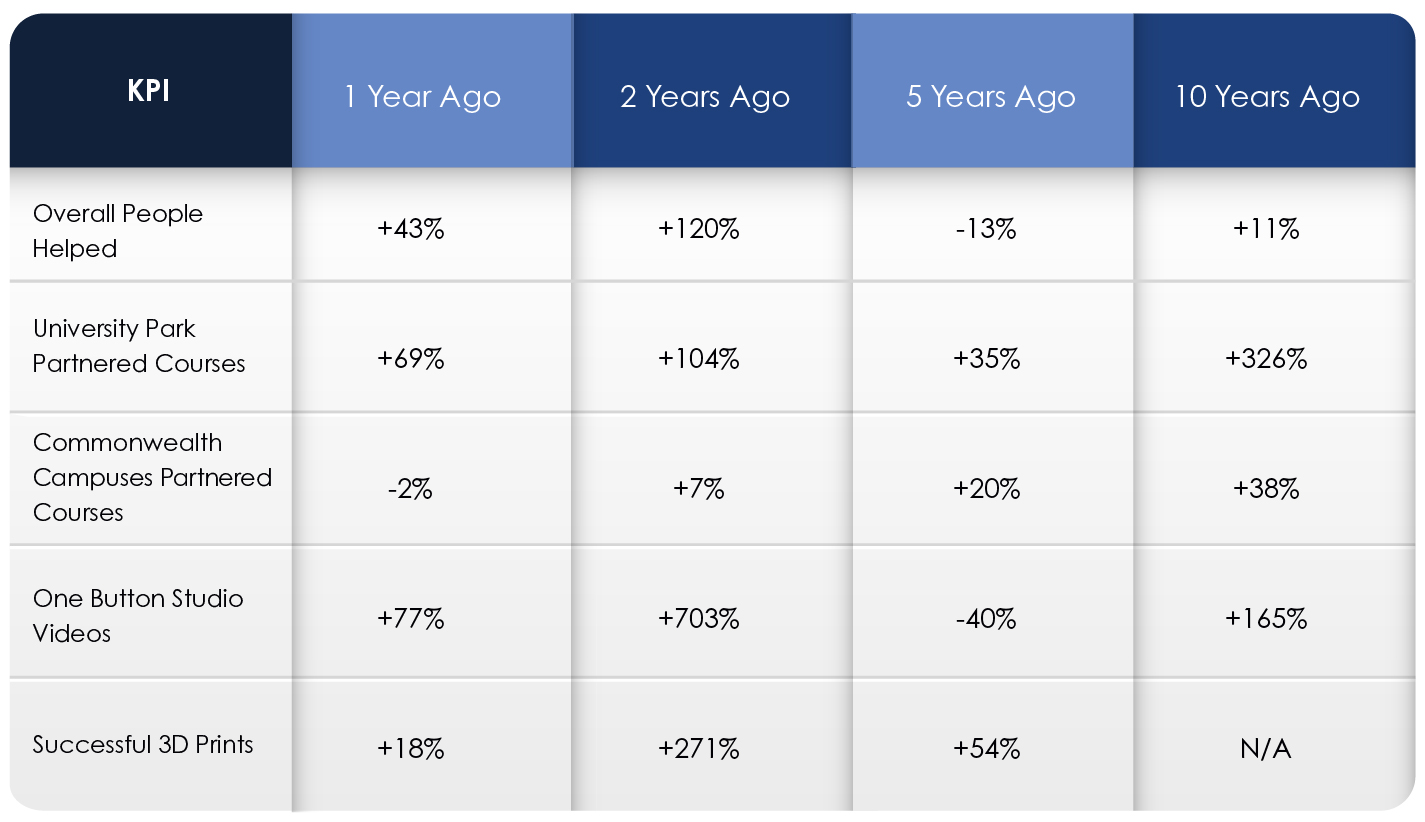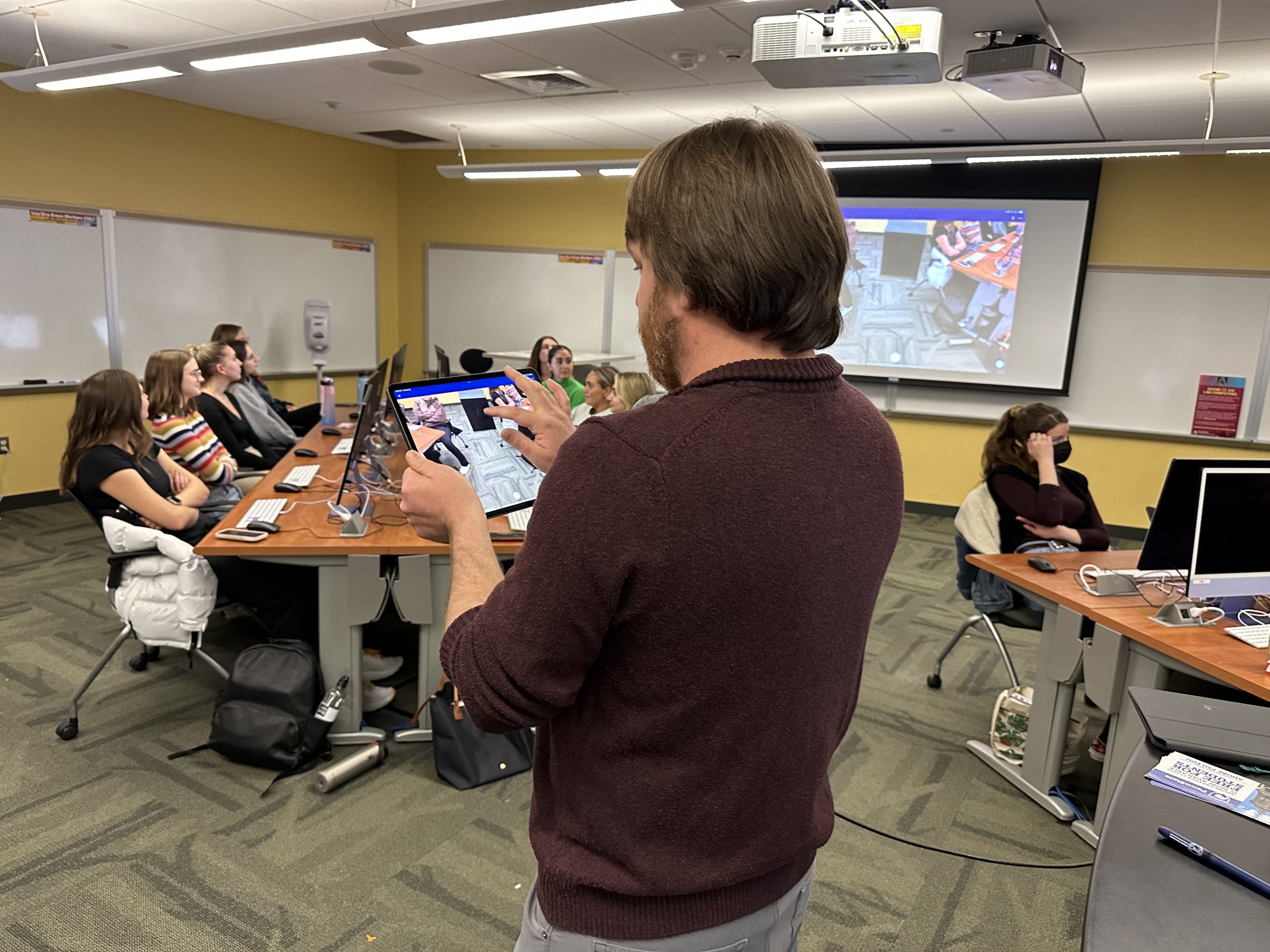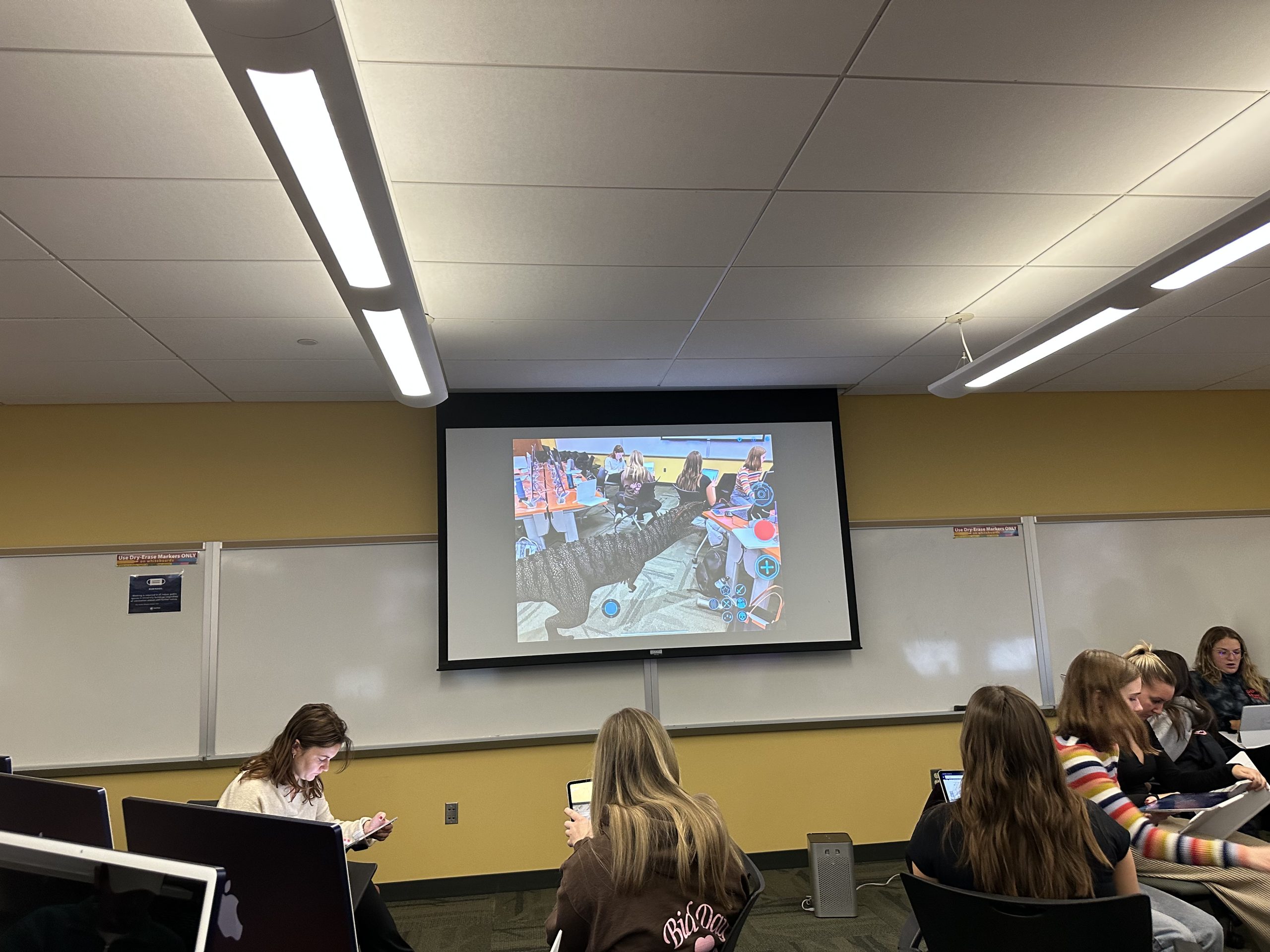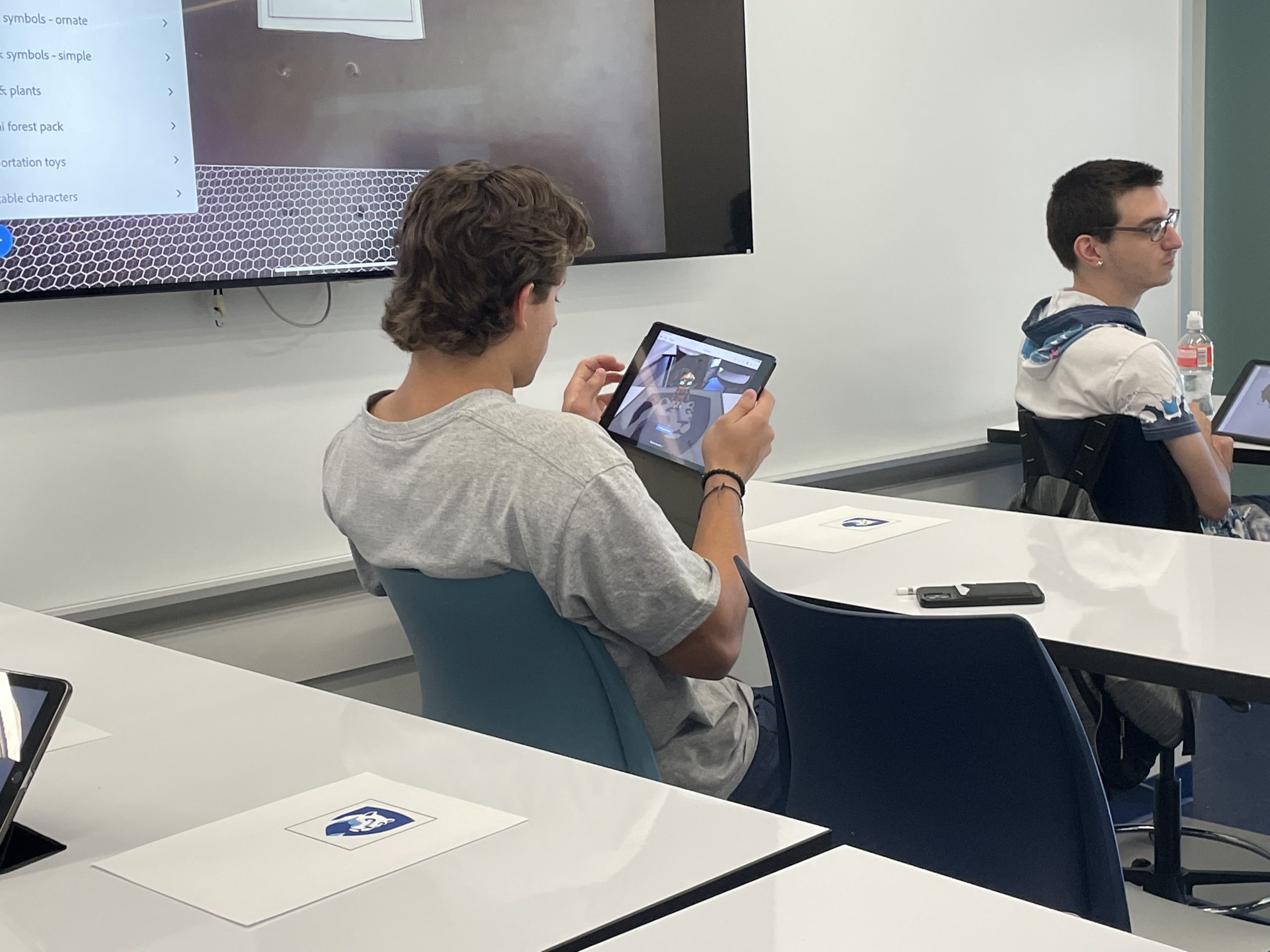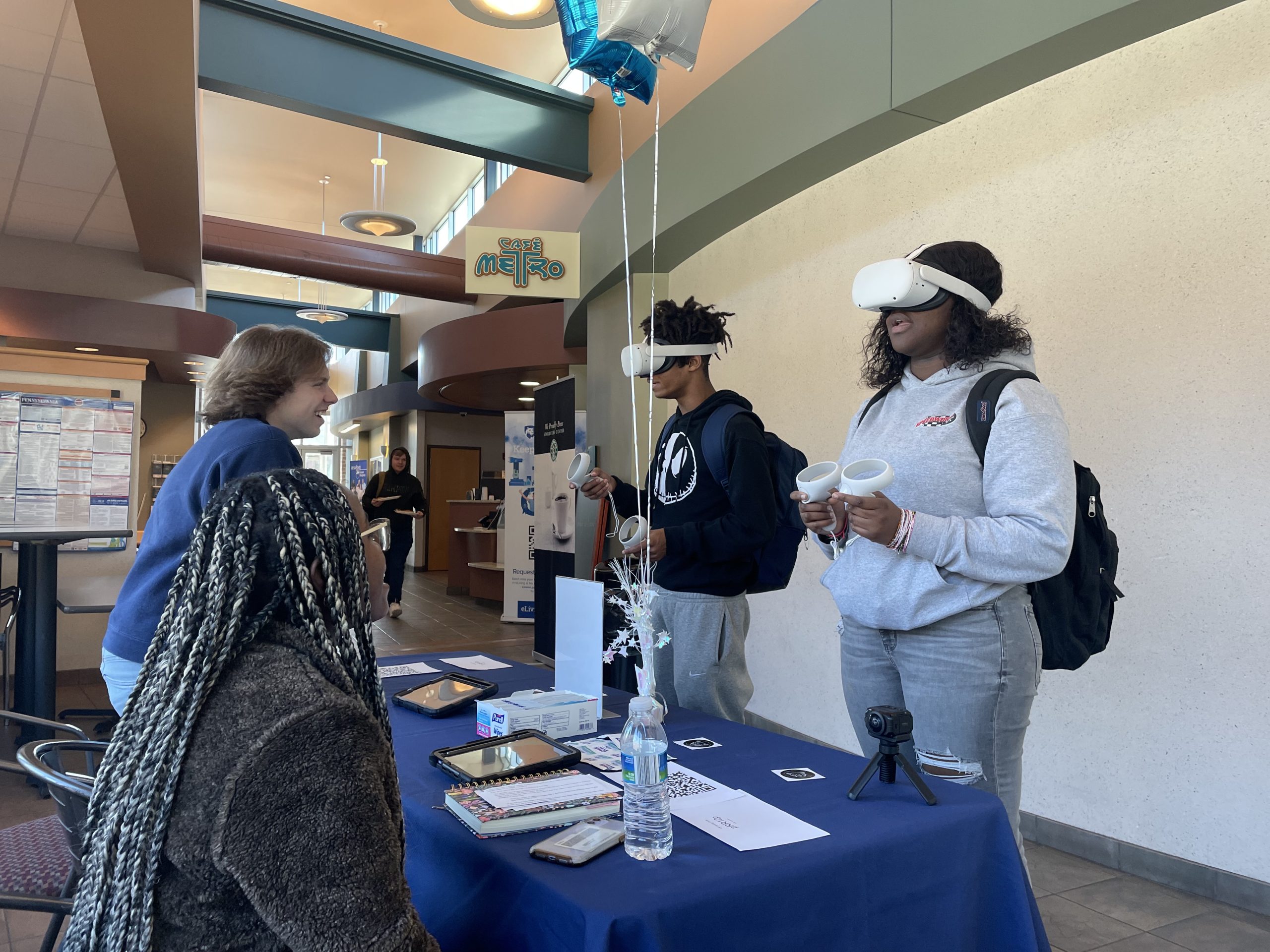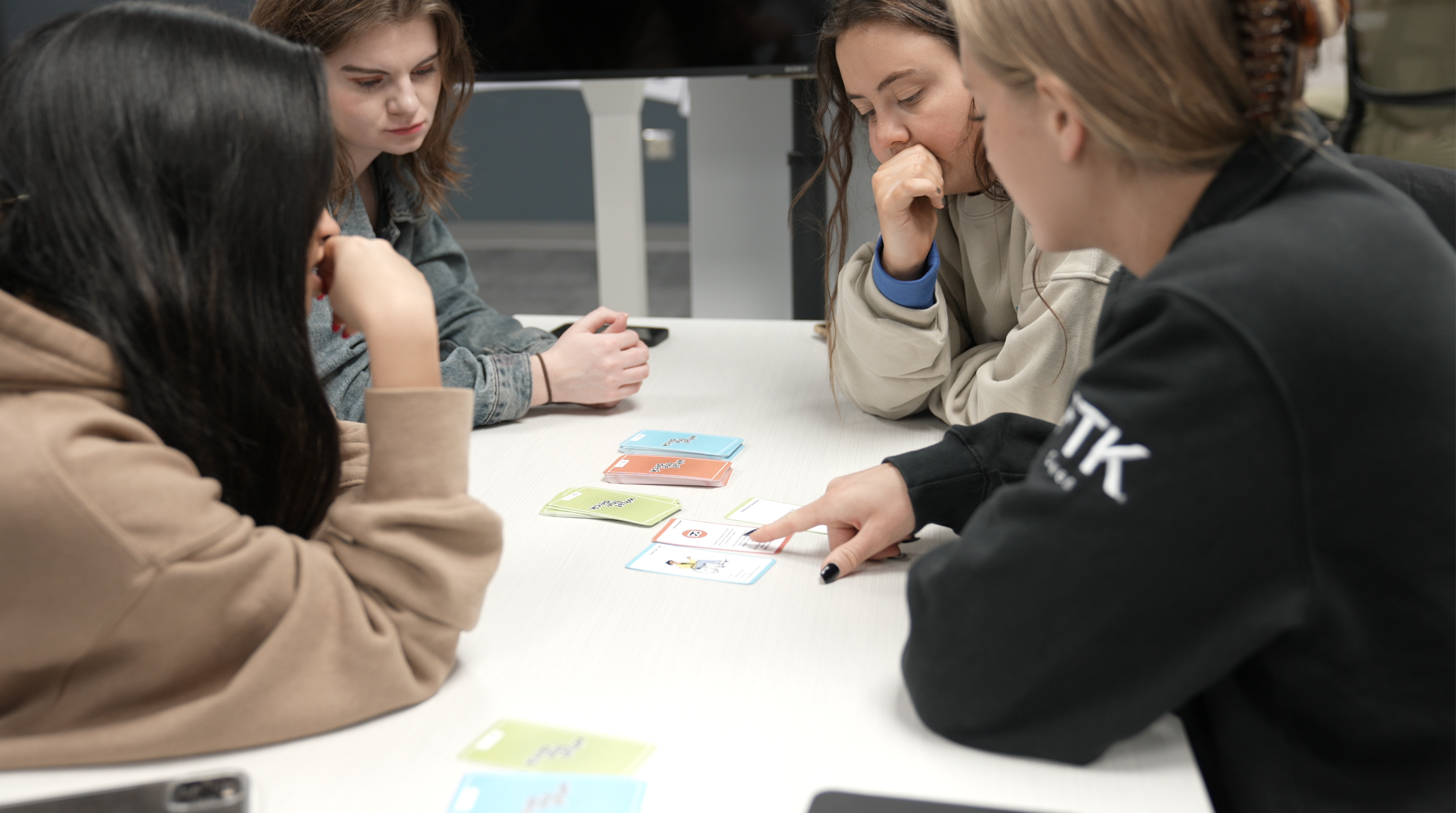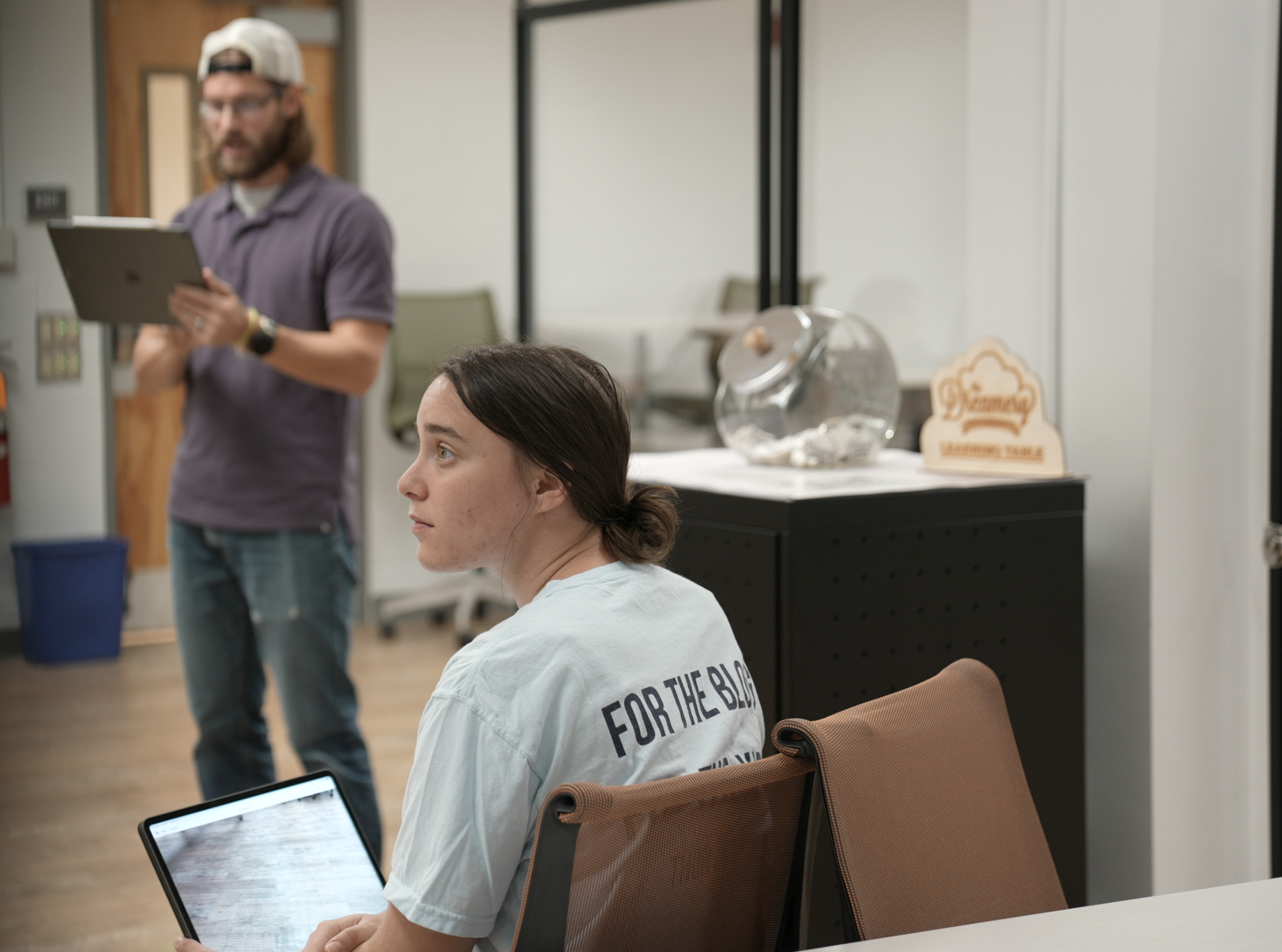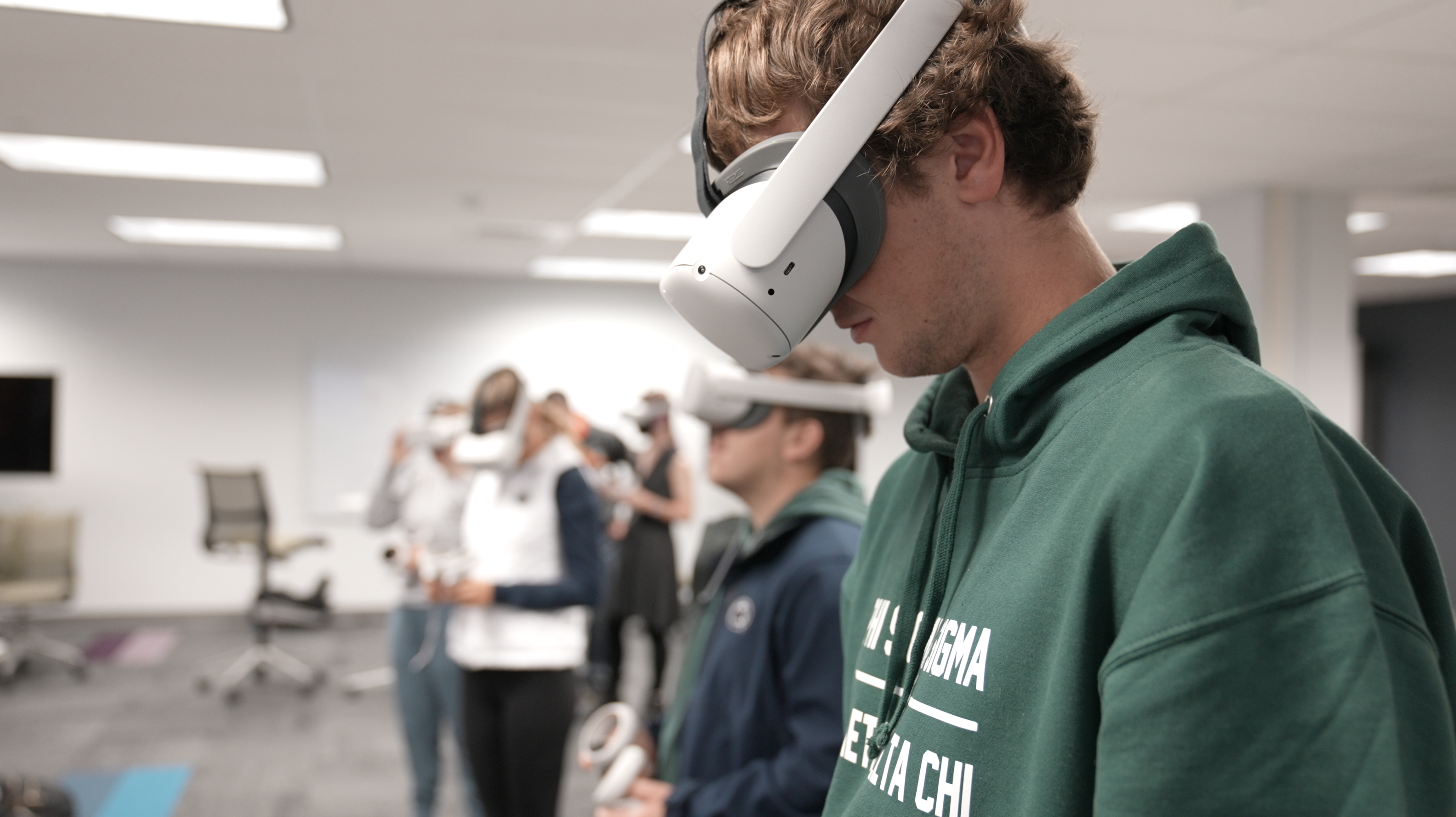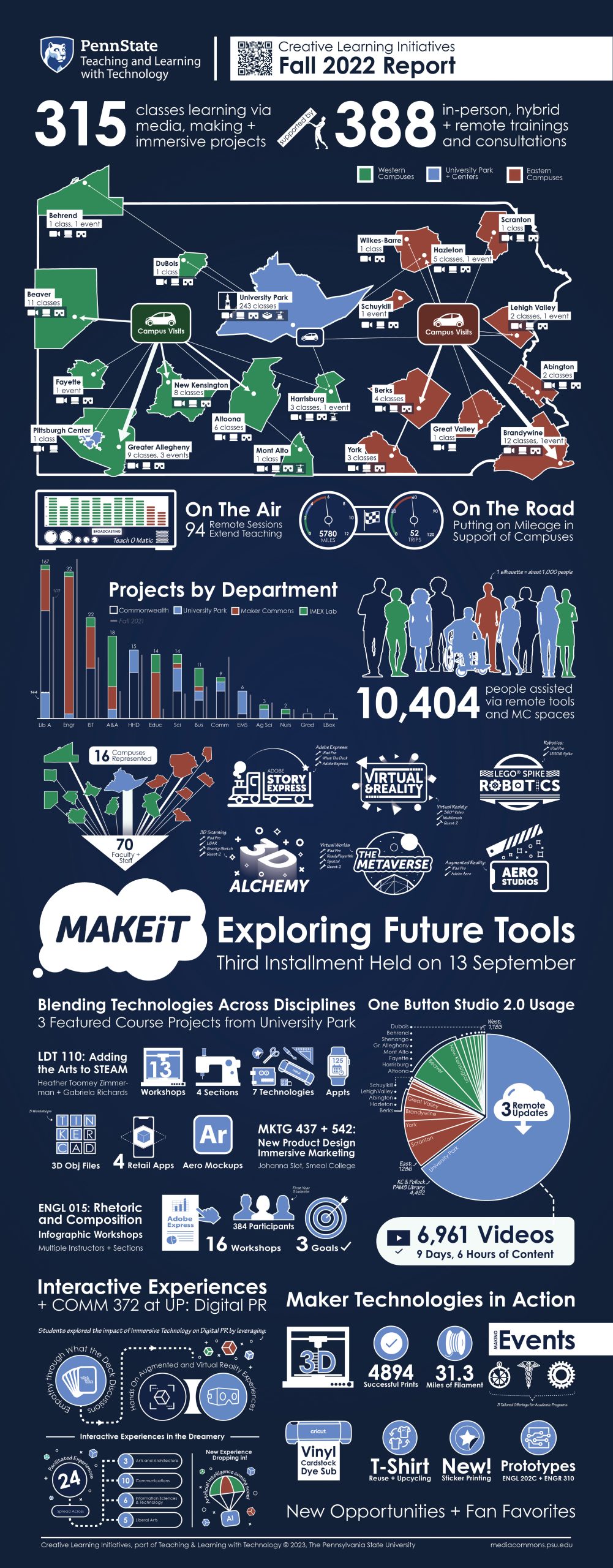
Summary
Fall 2022 saw 10,404 students and faculty use the Media Commons, Maker Commons, and Immersive Experiences Lab initiatives across the Commonwealth. Much of this use was focused in 315 classes in nearly every discipline offered at Penn State. To facilitate these interactions outside of University Park, traveling consultants provided 47 in-person sessions and 94 remote sessions for instruction, consultations and support.
One Button Studio 2.0 helped students and faculty create 6,961 academic videos, comprising over 231 hours of video. In addition, students from across the Commonwealth created 4,894 3D prints in pursuit of their course work and their own curiosity.
The Dreamery, operated by the Interactive Experiences team, facilitated 24 innovative learning experiences during the Fall 2022 semester, engaging courses with technologies ranging from virtual reality, augmented reality, playing What The Deck, and exploring simple robotics and sensors.
The report that follows breaks down our interactions with students and faculty and examines engagement levels with services offered, locations, and by individual colleges. Throughout the report we’ll draw attention to exciting assignments, surprising class partnerships, and interesting observations from the semester – stories that tell the ways in which Penn State faculty and students are pushing the boundaries of education into the future. We also point out usage and technology trends that draw from the Creative Learning Initiatives group’s proven history in supporting multimedia and emerging technology as well as reflect on challenges and opportunities in the coming semesters.
MAKEiT
The third MAKEiT event was held on September 13, 2022 at the Eric J Barron Innovation Hub in downtown State College. This event was planned for nine months by members of TLT’s Creative Learning Initiatives, Learning Design and Operations teams. More than 70 faculty and staff from 41 disciplines and 16 campuses spent the day getting hands-on with new creative multimedia technologies like virtual reality, augmented reality, Adobe Express, What The Deck, the Metaverse, 3D scanning, and LEGO robotics. The six collaborative learning experiences were designed specifically for MAKEiT, with a unique emphasis on technology experience, problem-solving, and fun. These experiences jump-started a conversation about the use of creative technologies in the classroom and engages the Penn State community in exploring what comes next. Several of these newly designed learning experiences have been repurposed as new workshops in the Dreamery or the Media Commons.
People Helped
Faculty and students used Media Commons, Immersive Experiences Lab and Maker Commons services in a variety of ways in all of our locations over the course of the semester. These charts count how many people were aided by our consultants in either 1-on-1 consultations or in-class workshops.
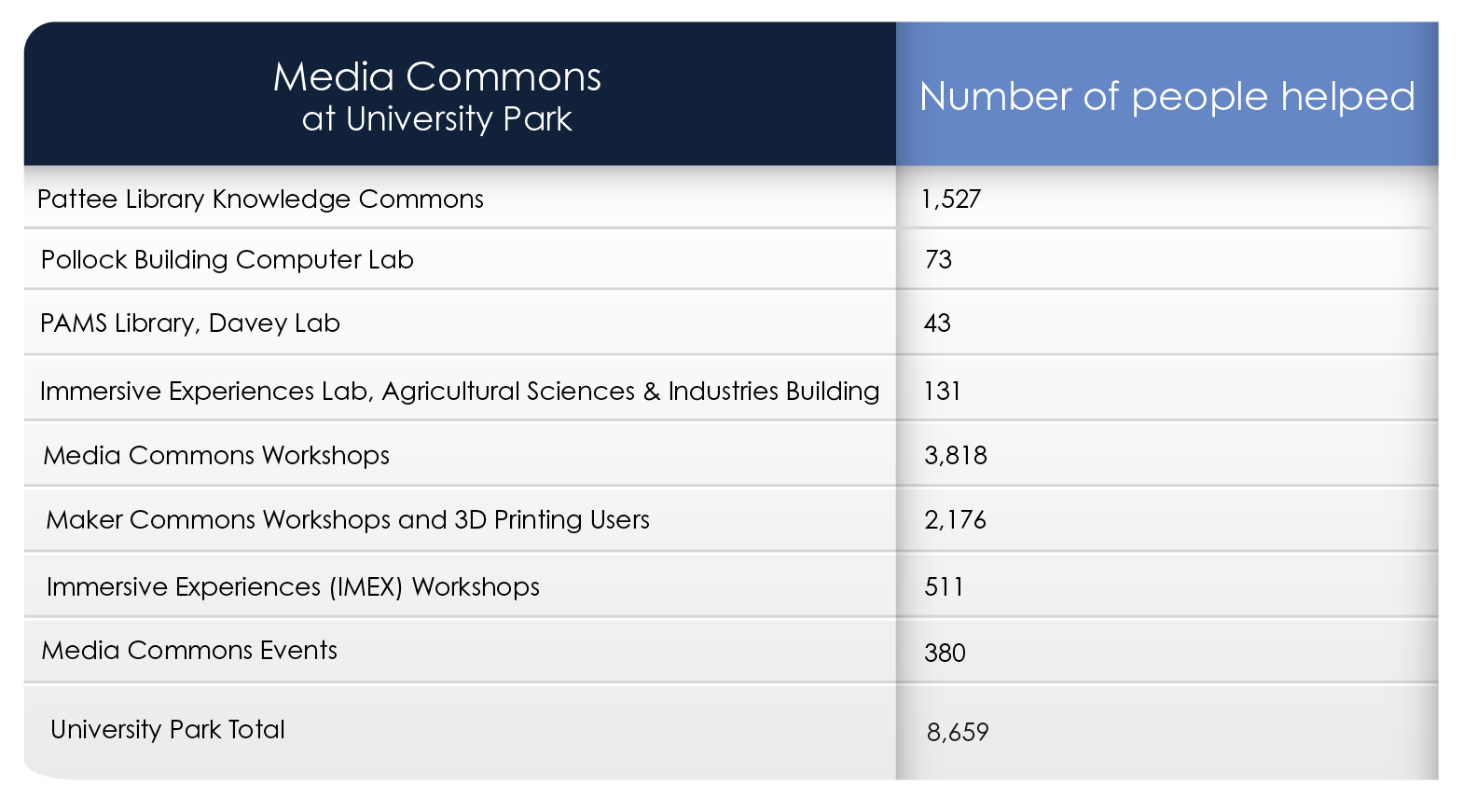
University Park Technology Breakdown

Featured Stories
Johanna Slot’s MKTG 542 and MKTG 437 classes at University Park were introduced to immersive and 3D marketing through 3D printing, augmented reality, and virtual reality experiences. Students in MKTG 542 (New Product Development) were taught how to create simple 3D models of products using Tinkercad and 3D printed the models. The MKTG 437 (Advanced Retail Management) students visited Pattee for an augmented reality workshop where they experienced different AR apps designed by retail brands. Students were asked to choose a brand or retailer, select an objective – anything from boosting sales, offering product information, demonstration, communicate the context of the need and then create their own augmented reality marketing app prototype using Adobe Aero. The MKTG437 students also experienced new ways of marketing products in virtual reality, including an interactive Dyson app and 360 videos and were asked to critically evaluate the VR app’s effectiveness in achieving the brand’s strategic business objective.
Students in ENGL 015 at University Park were given a culminating assignment and asked to create nontraditional rhetorical text: an infographic. To complete this assignment 384 students were taught basic design principles and how to create dynamic, concise, and visually pleasing infographics using Adobe Express. Students achieved three goals in this project, revising a research-driven essay, adapting one element of its intention and transforming the topic into an infographic that describes a complex issue and calls for action.
Campus Engagement
Campuses often don’t have their own local Media Commons support and so rely on our consultants to visit campus to work with faculty and provide workshops for students. We host several tailored faculty events each semester to discuss opportunities and visit campuses as often as possible to support class partnerships.
Western Campuses
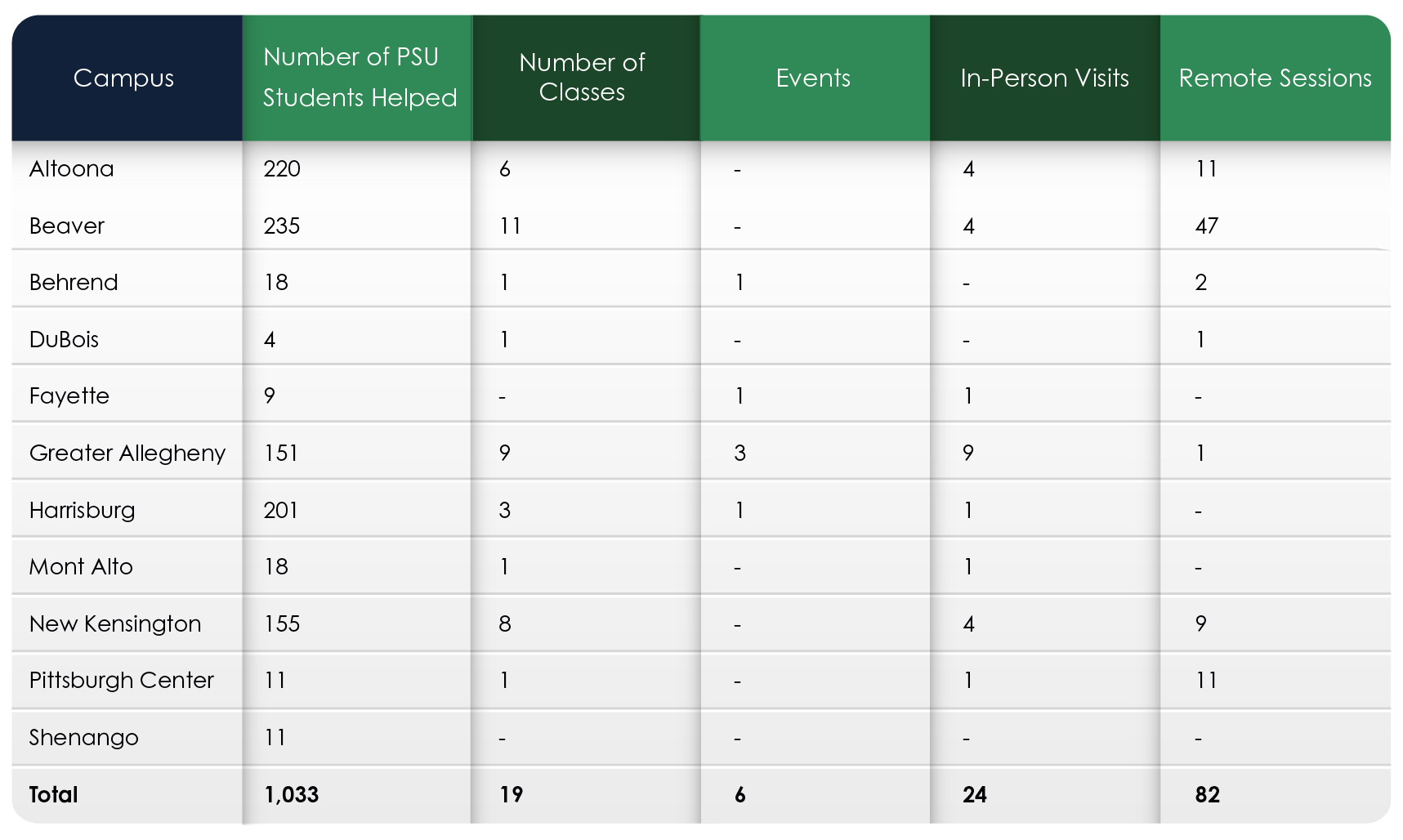
* In-Person Visits include travel to campus for equipment and computer service and/or One Button Studio tune-ups.
† Remote Sessions denote online teaching workshops, faculty consultations, meeting with students, hosting events, critiques of project materials uploaded to Canvas, OneDrive, etc.
Featured Stories
Greater Allegheny received the honor of being named an Apple Distinguished School for their efforts in creating a culture of digital fluency that began with the campus-wide 1:1 iPad initiative. As part of this recognition, campus leadership held an inaugural Digital Fluency Week in early November that featured programming related mobile creativity and included Adobe Aero training led by Penn State’s campus representative, Steve Hart as well as Immersive Headset and Tours Pilots tables at the culminating event.
EARTH 412 at the Penn State Center in Pittsburgh saw eleven students producing short films focusing on their experiences working with community partners across their entire City Semester engagement in the region. Not only will these videos serve as evidence of student learning around topics of sustainability, but their work was collectively featured in a promotional video for the semester-long program as well as individually across several posts and features from Penn State Outreach.
Eastern Campuses
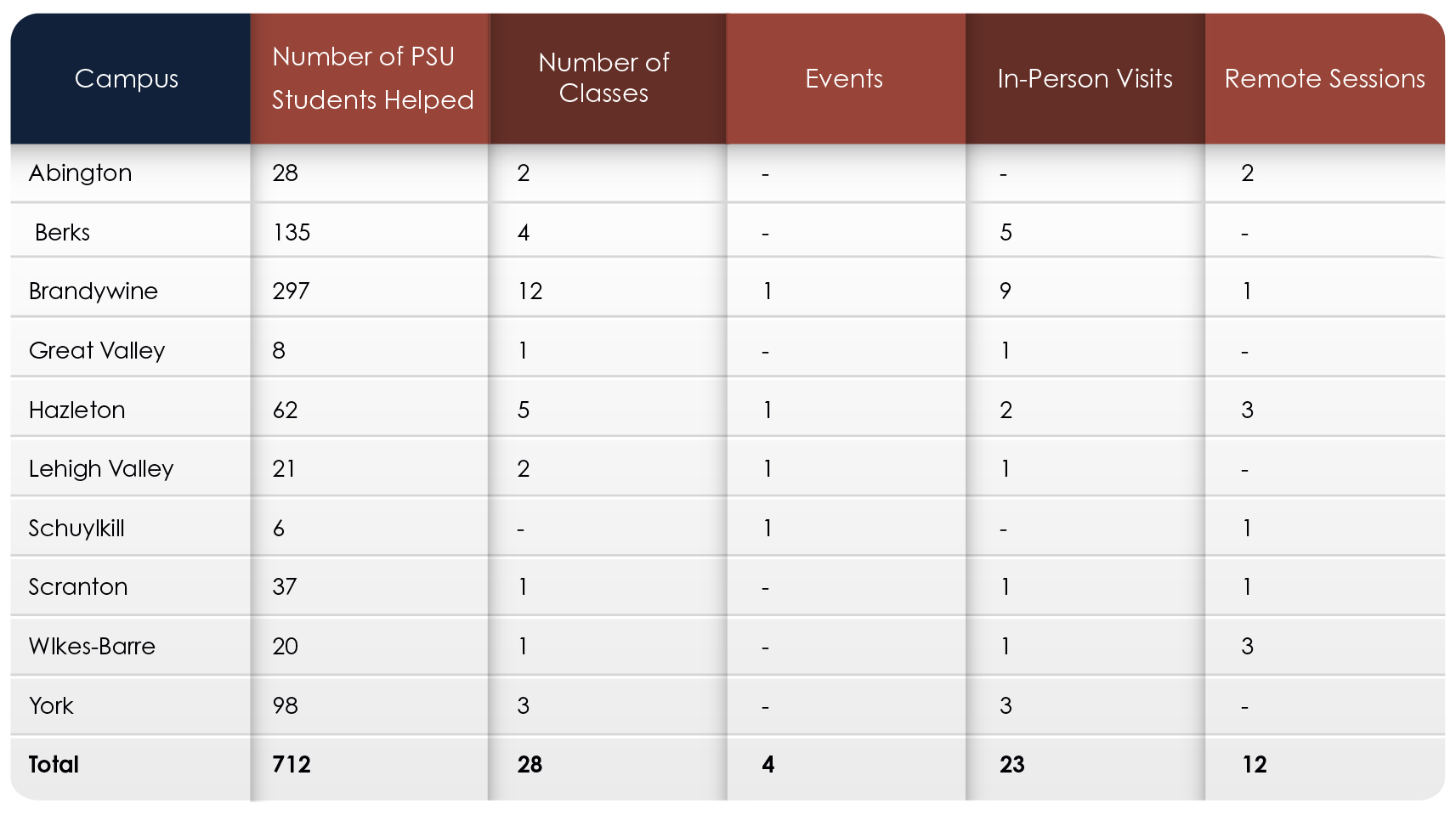
* In-Person Visits include travel to campus for equipment and computer service and/or One Button Studio tune-ups.
† Remote Sessions denote online teaching workshops, faculty consultations, meeting with students, hosting events, critiques of project materials uploaded to Canvas, OneDrive, etc.
Featured Stories
Students in Jayné Park-Martinez’s EARTH 197 class at Penn State Berks were asked to work on a photo-video project about their hometown to ultimately raise awareness of local social justice and environmental justice problems and promote social and environmental change. They used Adobe Express Video to create their projects.
James Berkey at Penn State Brandywine challenged students in his ENGL 83S class to create photo-essays telling the story of their life so far. The students were asked to choose photos and then compose thoughtful essays about each photo. Students were able to arrange the layout of their photos and corresponding essays by utilizing Adobe Express Pages.
Class Partnerships Across Colleges
Media Commons consultants partner with faculty from every college at Penn State to help design multimedia and making assignments, provide workshops for students, and 1-on-1 consultations as the students complete their work. This table represents how many classes were worked with in which colleges during the semester.
Partnered Service Key: Media Commons = MeC, Maker Commons = MaC, Immersive Experiences Lab = IMEX
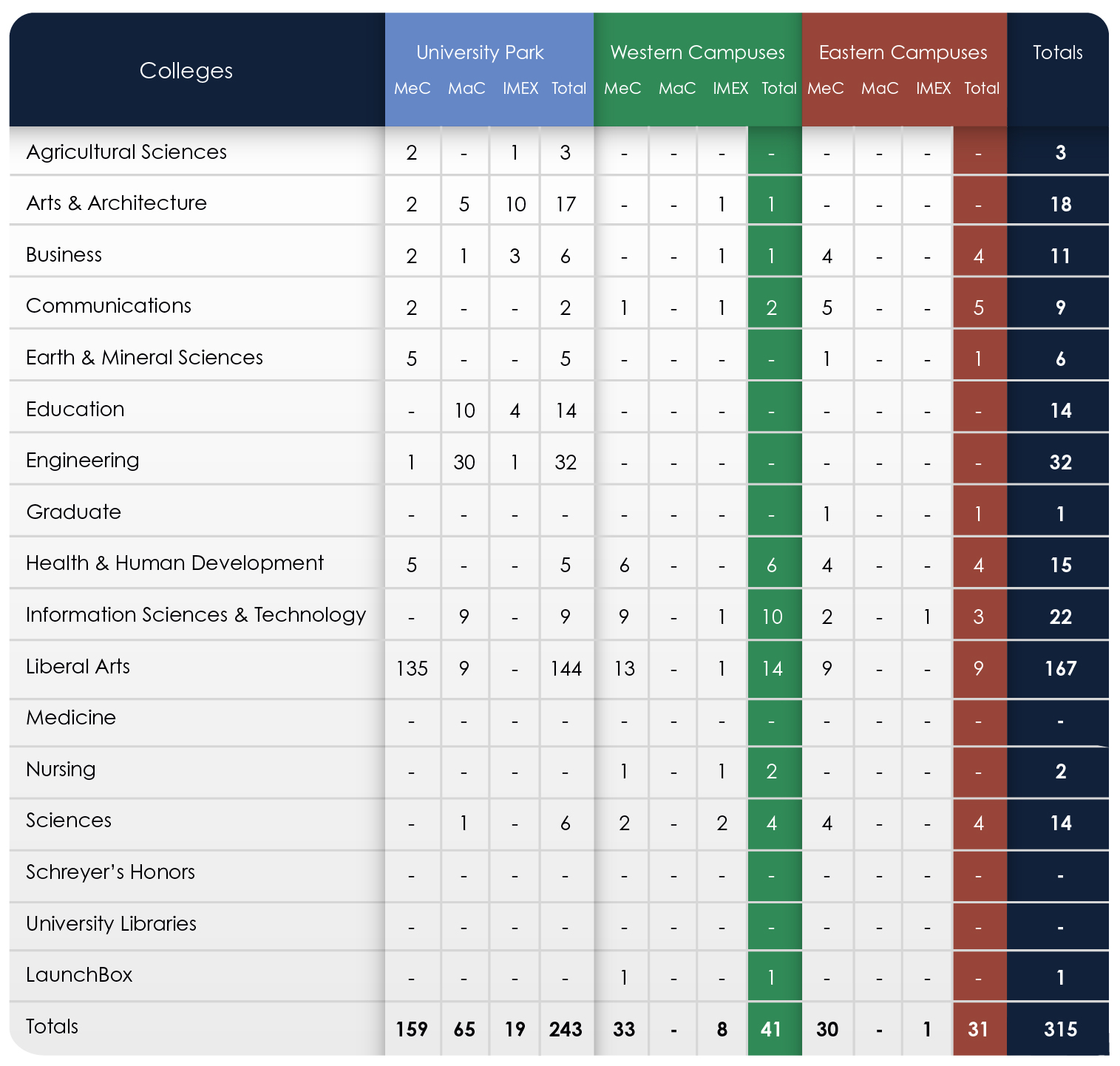
Featured Stories
The Immersive Headset and Immersive Tours Pilots launched across the Commonwealth with eight projects in classes ranging from Advertising and Promotion to Anatomy and Physiology, Art in the Natural World to American Material Culture, Information, People and Technology to Medical Electronics, Public Relations to Psychology of Learning. Over seventy students got first-hand experience with Virtual Reality headsets and learned about diverse topics like land-based art, Costa Rican culture and hosting press conferences.
IMEX Lab facilitated six immersive-focused events across the Commonwealth, including 3D Scanning Roadshows at Behrend (10 participants) and Hazleton (5 participants) as well as a teaching with immersive tools event at Harrisburg (20 participants), VR guided meditation at Lehigh Valley (20 participants) and two Adobe Aero workshops at Greater Allegheny (6 participants) and Behrend (10 participants).
Raymond Watkin’s ENGL 202C class from University Park was assigned a maker project to produce a professional instruction set. The students participated in hands-on demonstrations of LittleBits, LEGO Robotics, Cricut smart cutter, dye sublimation, sticker printing, and 3D printing technologies. The students used these resources to produce their projects and then created written and video documentation of the steps required to achieve their work.
Interactive Experiences
Dreamery Experiences
The Interactive Experiences team facilitated 40 experiences across 21 courses and events. The team currently offers four main experiences: virtual reality, augmented reality, robotics with LEGO Spike, and a cooperative, discussion-based card game that focuses on empathy, diversity, and technology. These experiences impacted 594 students and staff across six colleges.
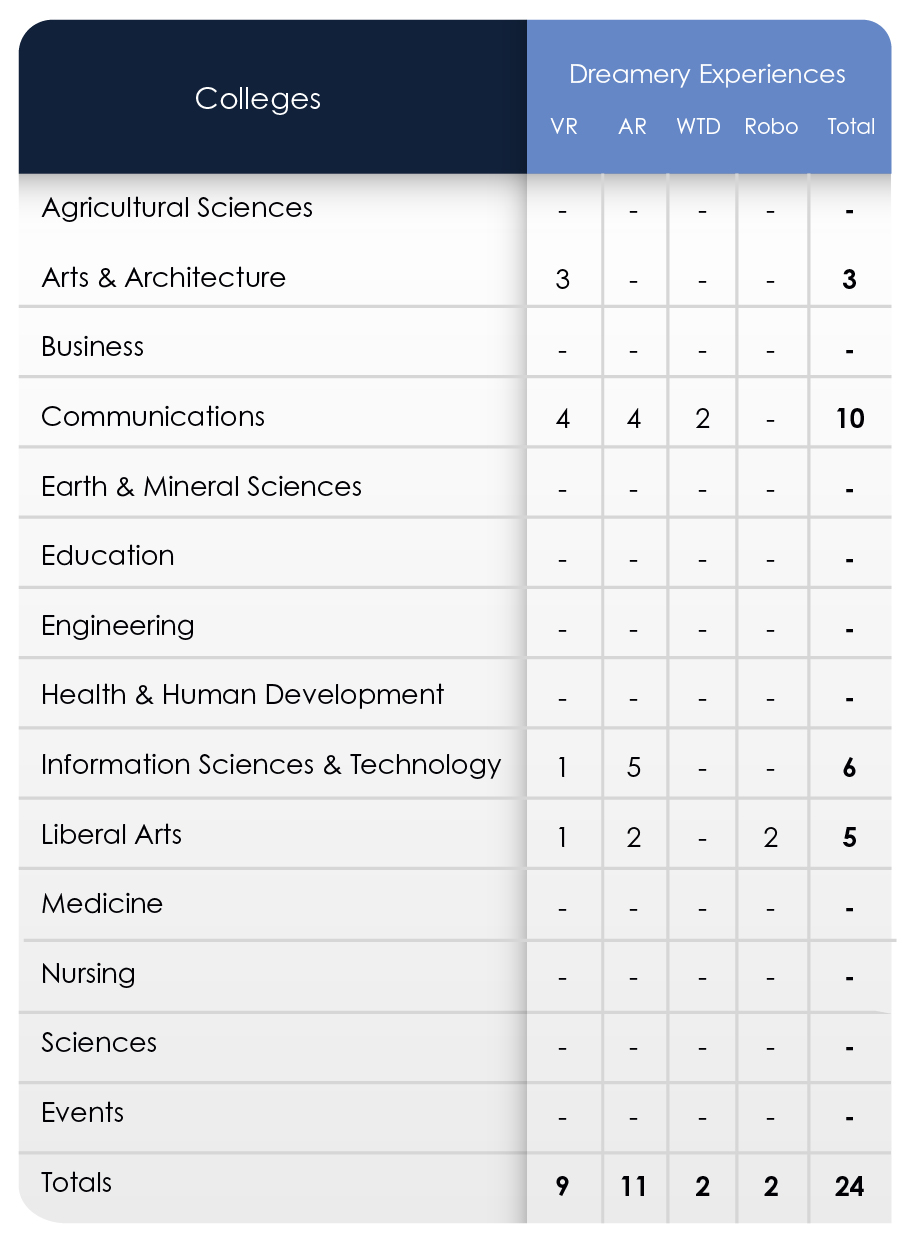
Featured Stories
Bill Zimmerman brought his COMM 372 students to the Dreamery to explore how digital PR is being impacted by immersive technologies. The class began with a facilitated discussion of how technologies, both old and emerging, are impacting societies all around the world, using a tool called What The Deck. This paved the way for two experiences around virtual reality and augmented reality. Students learned Adobe Aero and created their own AR scene and discovered how to be in virtual reality with the Meta Quest 2 headset.
The Interactive Experiences team assisted Amy Garbrick with a large enrollment section of IST 110. The section split into five smaller groups to explore different technologies through Tech Labs. The goal of one of these labs was augmented reality. Over the course of five weeks, nearly 150 IST 110 students arrived at the Dreamery and learned how to create their own AR scenes using Adobe Aero. The students worked in small teams to develop a short story with three parts, a beginning, middle, and end. After brainstorming, writing, storyboarding, and developing their stories, they presented their stories to the class in augmented reality.
One Button Studio: On Campus + At Home
Media Commons supports the One Button Studio project across campuses and students in remote locations. The One Button Studio allows students and faculty to simply create quality academic videos, often for recording presentations, lectures, and demonstrations, or completing class assignments – both in-person and via best practices to apply at home via Zoom.
In-Person
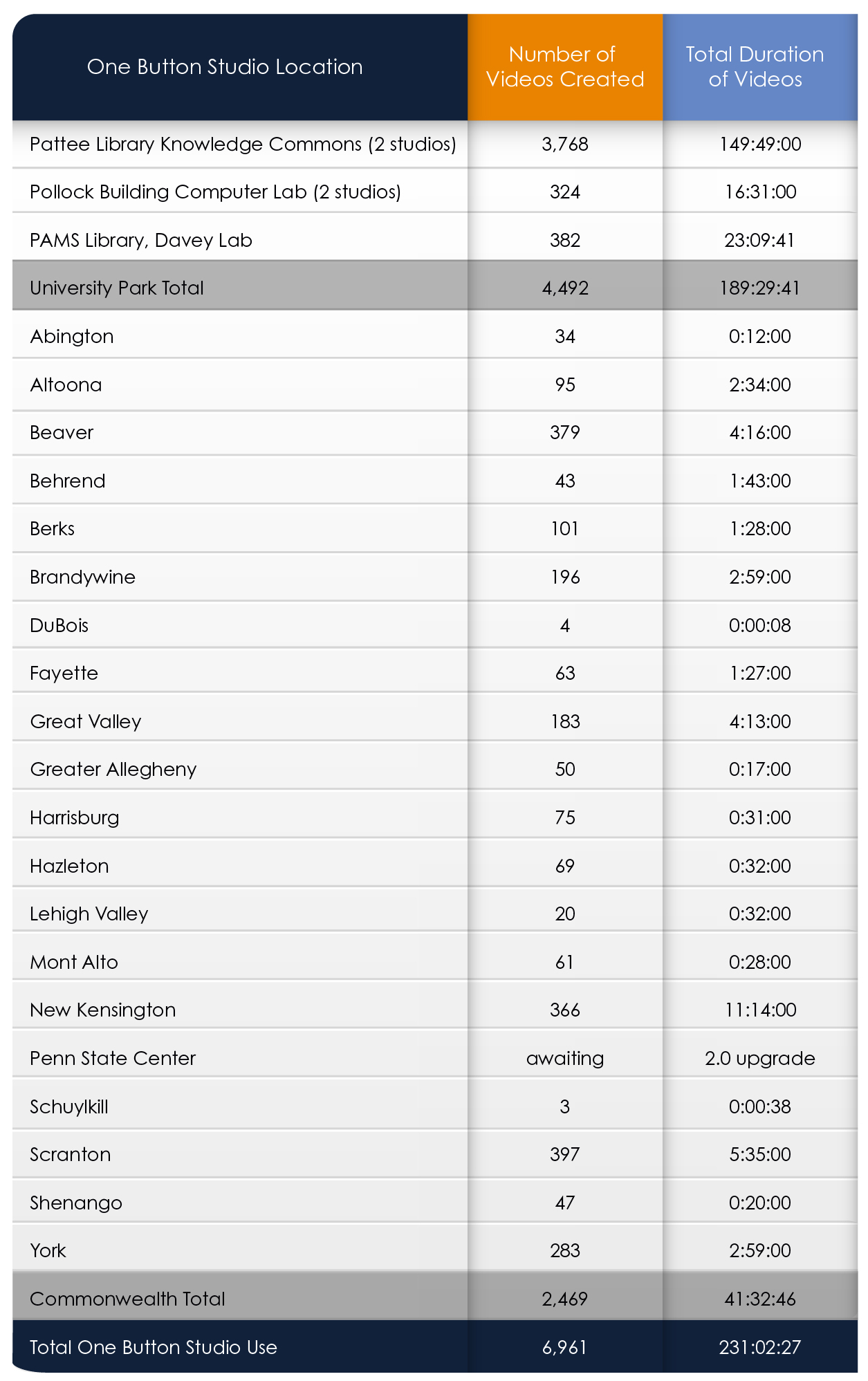
Online
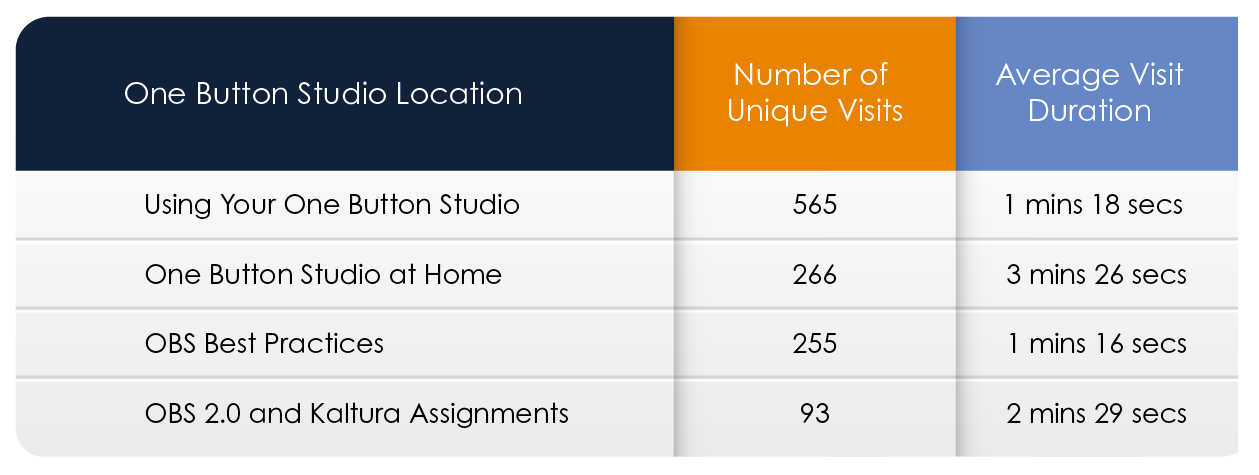
One Button Studio Updates
Three updates for OBS 2.0 were released to studios in June, July, and August 2022. These updates featured the following changes:
Version 0.10.8 (August 2022) Features
- Adjusted application defaults for all future rollouts.
Version 0.10.7 (July 2022) Bug Fixes
- Resolved application permissions (audio, video) issue with M1 Monterey machines.
Version 0.10.6 (June 2022) Features
- Altered codebase to be compatible with future Mac and iPad OS releases.
- iPads are now set to single app mode allowing for greater system stability.
- Updated documentation can be found at onebutton.psu.edu.
Featured Stories
Eberly College of Science faculty member Jackie Bortiatynski of University Park reworked an assignment that was initially developed during remote learning and replaced a zoom video recording interview assignment with in-person video recordings of interviews at our OBS locations at UP. The Chemistry department’s FYS PSU16 students were assigned a group project to record in the OBS an hour long interview with a chemistry faculty member. This assignment had three objectives: to improve the students’ digital literacy, to build community between students and faculty within the department, and to enhance communication skills.
Maker Technologies
The Maker Commons offers students at University Park, the Commonwealth Campuses, and World Campus access to 30 3D printers through an online submission process. The printers are located at University Park but, through a partnership with University Libraries, are able to ship prints to any student for easy pick-up.

Featured Stories
Four sections of Heather Toomey Zimmerman and Gabriela Richard’s LDT 110 at University Park attended three workshops – a Maker Technology Overview, LEGO Robotics, and Augmented Reality. A new fourth workshop was requested to add “Arts” to STEAM and the team used Sphero Bolt robots to teach students how to code the robots to draw an image with LED lights and then use slow exposure photography to capture the outcomes. The final assignment required combining two or more technologies and then iterating upon the original design. Technologies utilized during this project include 3D printing, robotics, LittleBits, Cricut, sticker printing, sewing, and Arduino.
Maker Commons participated at University Park in the College of Engineering’s Welcome Back Week in late August with a T-Shirt Making Event. Staff and the Makers-in-Residence assisted over 250 students in creating unique digital designs using Cricut Design Space and then cutting the designs from Heat Transfer Vinyl and pressing them onto their shirts.
The Engineering Entrepreneurship program in the College of Engineering at University Park requested Maker Commons support in co-leading a Rapid Entrepreneurship Challenge for 30 students enrolled in Penn State’s Millennium Scholars Program. With OriginLabs, Maker Commons staff and Makers-in-Residence assisted students in creating digital clock face designs in Cricut Design Space and vinyl, along with prefabricated clock parts to produce their final product. Students competed by attempting to selling their clocks on the street.
Website as a Central Support Tool
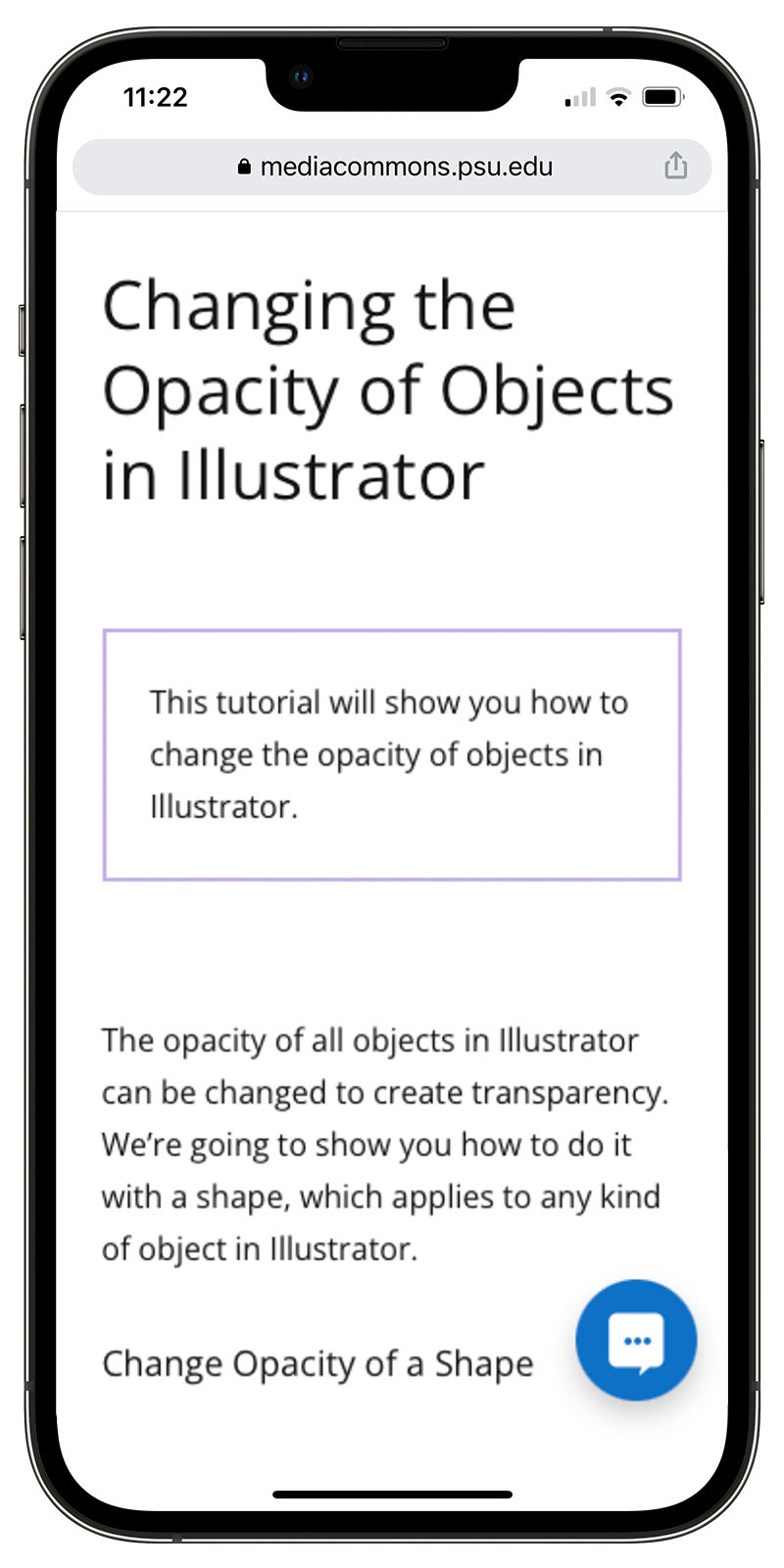
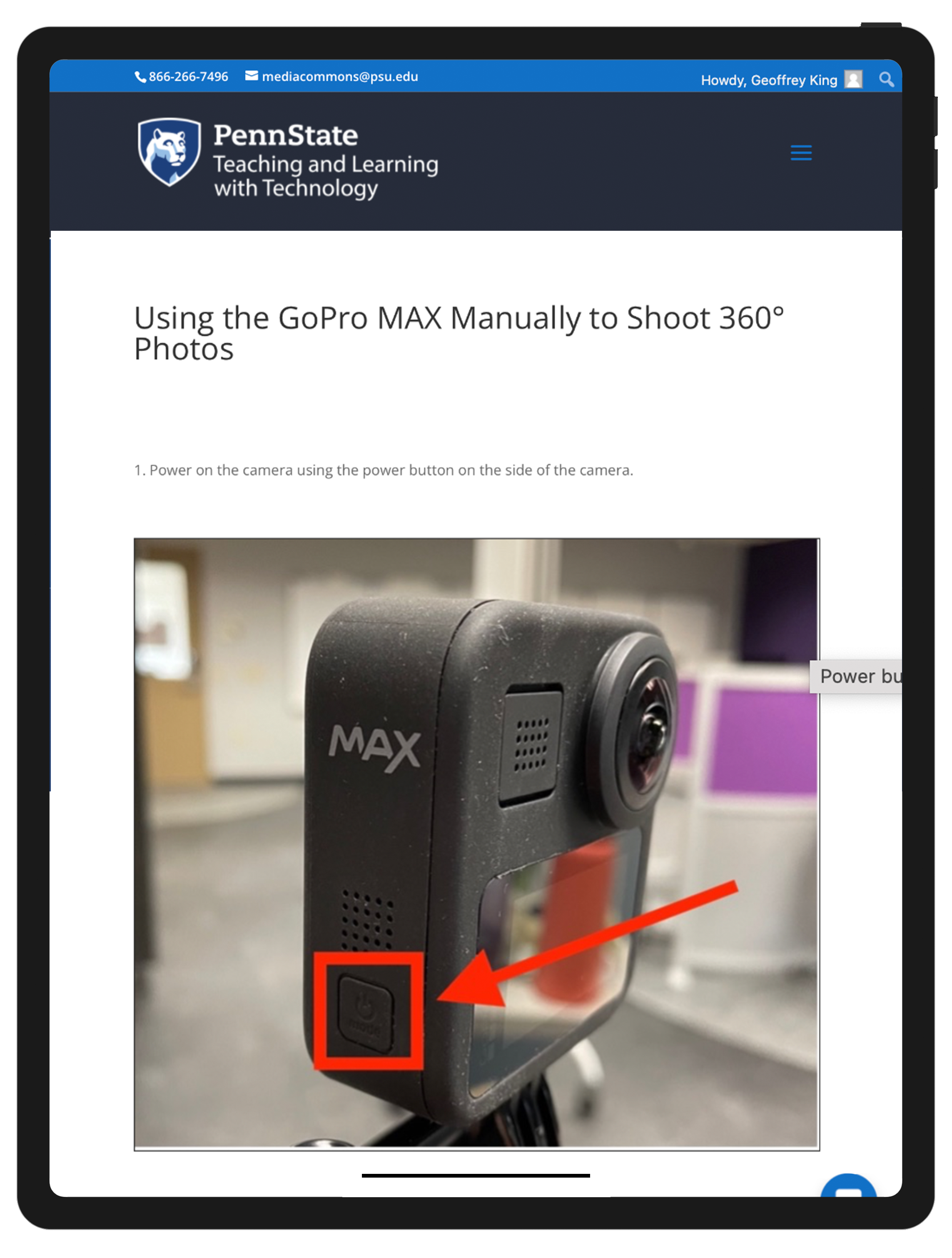

The Creative Learning Initiatives online resources have continued their shift to supporting roles with the second full semester of largely in-person learning across the University. This is illustrated with increasing popularity of content that addresses physical resources like 360º cameras, immersive headsets and 3D printed objects. The rise in viewership of PSA and Free Media Library content on the Media Commons site also points to a return to traditional, complex video assignments in many classes that had shifted to lighter, online-friendly tools like Adobe Express.
The number of unique visitors reached 122,952 across all three services:
-
103,259 via Media Commons (-%33)
-
8,521 via IMEX Lab (+%59)
-
11,172 via Maker Commons (-%4)
The pageviews for Media Commons reached 158,426 encompassing popular content including:
-
Changing the Opacity of Objects in Illustrator (+3%)
-
Public Service Announcement (+1%)
-
Free Media Library (unchanged)
IMEX Lab pageviews reached 16,662, representing popular content including:
-
Factory Reset Oculus Quest 2 (+4%)
-
Using GoPro MAX Manually (new)
-
Pairing GoPro MAX with Phone (new)
Maker Commons pageviews reached 78,957, representing views of the following content:
-
3D Printing (+1%)
- Picking Up Your Print (+2%)
- 3D Printing Information (unchanged)
Challenges, Opportunities & Notable Trends
The Media Commons team met during the summer of 2022 to update the core competencies and goals for the service. These goals are revisited and updated every three years. This year the focus for the goals included “Student Support and Engagement,” “Learning Spaces Improvements & Revitalizing Campus Spaces,” “Faculty Partnerships and Outreach,” “Explorations of Applications for Emerging Technologies,” “Expanded Support,” and “Strong System of Planning, Self-Assessment + Sharing.” This process also recognized that former goal “Full Integration into Online Learning” had developed into a core competency of the service.
Looking at some of our key performance indicators when compared to 1, 2, 5, and 10 years ago will help us identify areas of growth and change. There is an ebb and flow to each semester, but by analyzing in this way we will be better able to identify trends worthy of further investment or of reassigning resources.
